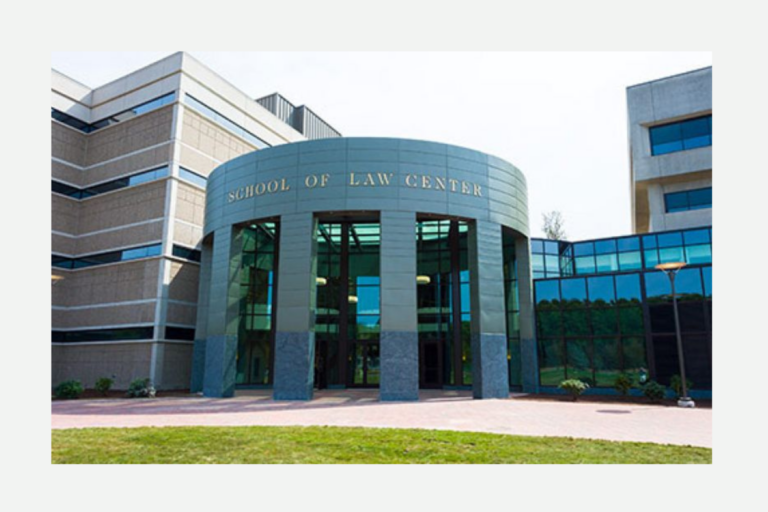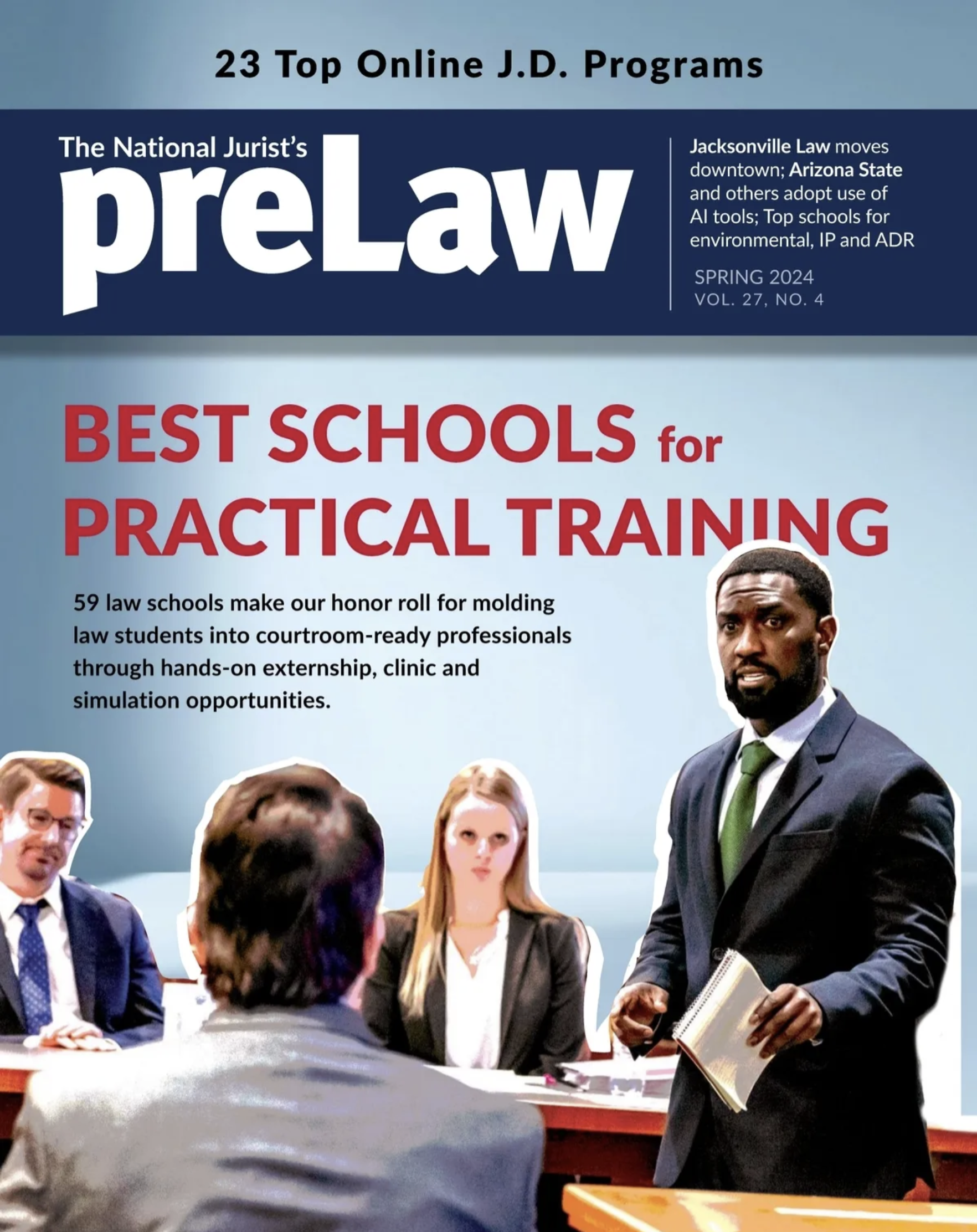By Ross Rinehart
Even if a pre-law student has been able to avoid the health and financial hardships suffered by far too many as a result of the COVID-19 pandemic, their path to law school has likely been beset by a number of obstacles.
They may have been sent home from college unexpectedly. The classes they planned on acing to boost their GPA were perhaps changed to pass/fail grading. They may no longer be getting the firsthand legal experience from a job or internship at a law firm, government agency, or nonprofit.
Despite all this, law school hopefuls could perhaps appreciate one small silver lining of this current crisis: a lockdown affords them more time at home and fewer distractions to study for the LSAT, the most significant hurdle that pre-law students must leap on their journey to law school. But with nearly all aspects of life changing as a result of this global crisis, so too must the LSAT.
The Law School Admissions Council (LSAC) abruptly canceled the March 2020 LSAT just two weeks before the test date. Those March registrants were automatically registered to take the next scheduled LSAT in April and given the option to reschedule to a later test date. Some did, while others chose to gamble on the April LSAT.
Then a few weeks later, LSAC also canceled the April exam. When the next LSAT would be held and how it would be administered was in flux. Rumors flew about additional test dates or a mythical remote test option. The latter was nothing short of a stretch.
Until LSAC announced the LSAT-Flex.
The LSAT-Flex is an at-home, remotely proctored, digital version of the LSAT that will be held on May 18th and 19th. Only those registered to take the April 2020 LSAT are eligible to take the May LSAT-Flex. Students will need to download special software on their computers and follow an extreme set of instructions to ensure compliance. Oh, and they’ll be recorded as they take the exam.
Still, a remote LSAT provides obvious benefits. Test takers wouldn’t have to travel to a test center or wait through the often lengthy check – in process before the test.
Assuming test takers find a quiet place to take the exam, they wouldn’t get distracted by other testers or deal with proctors during the exam. There would be no need to struggle with an unfamiliar tablet, because they’d use their own computer. Their proximity to their liquor cabinet for post-exam celebratory libations would be increased considerably.
However, in the week following the LSAT-Flex announcement, most eligible test takers were not discussing these benefits. Instead, the discourse surrounding the LSAT-Flex focused on the differences between LSAT-Flex and a traditional LSAT administration.
The typical LSAT — which is to say, every LSAT since 1991 — is composed of five, 35-minute sections, plus a take-home Writing Section. Four of those sections contribute to your final score: two Logical Reasoning sections, one Reading Comprehension section, and one Analytical Reasoning section (more commonly known as “Logic Games”). The fifth component is an unscored “experimental” section, which could be an extra Logical Reasoning, Reading Comprehension, or Analytical Reasoning section. These five sections could be given in any order, with a fifteen-minute break between the third and fourth sections.
By contrast, the LSAT-Flex will have only three sections, all scored: one Logical Reasoning, one Reading Comprehension, and one Analytical Reasoning. There will not be an “experimental” section or a break.
These structural changes left many confused about how the LSAT-Flex would even be scored. Since two of the four scored sections on the typical LSAT are Logical Reasoning sections, about half of a test taker’s final score is determined by those questions.
On the LSAT-Flex, however, Logical Reasoning is only one of the three scored sections. Some wondered if this Logical Reasoning section would be double-weighted to continue accounting for half of their score. However, LSAC has since clarified that this is not the case; performance on each section will be weighted roughly equally.
So how does one prepare for this new LSAT-Flex?
Given that the LSAT-Flex is structurally different from the traditional LSAT, if you’re one of the test takers eligible for May LSAT-Flex, how should you prepare for it?
LSAC has published 89 previous LSATs that students can take as practice exams. However, each of these exams includes four scored sections, with half of the score determined by their performance on Logical Reasoning. Many test takers are understandably apprehensive about using these exams to prepare for the three-section LSAT-Flex.
However, even with these structural changes, it’s important to note that the LSAT-Flex will have the same content as any other LSAT.
The same types of questions that have appeared on every LSAT will continue to appear on the LSAT-Flex, almost certainly in similar proportions. The majority of a well-prepared student’s study plan should involve learning these concepts and developing strategies to answer the various question types. And that should still be your plan, if you’re registered for the LSAT-Flex.
But, considering that Logical Reasoning will count towards only about a third of your score on the LSAT-Flex, you might consider changing how your allocate their study time. For context, when prepping for regular LSATs, I recommend that students dedicate at least half of their study time to Logical Reasoning, because it traditionally accounts for the half of their score and the skills developed for that section will help on the other two (and the reverse isn’t always true).
For the LSAT-Flex, it now makes sense to dedicate about a third of your study time to each section. Of course, if you find one section considerably more difficult than the others, then you should spend more time improving there. But when making an initial plan of attack for the LSAT-Flex, plan on dividing your time equally amongst Logical Reasoning, Reading Comprehension, and Logic Games.
The only other change you should consider implementing for the LSAT-Flex will occur toward the end of your studies, once you begin applying your knowledge and strategies to actual, timed practice exams. You can still use the normal four-section practice tests. Take all four sections of the exam under the closest approximation of real test-day conditions—i.e., don’t have Tiger King on in the background.
The score from these four sections might be a point or two higher or lower than the score you’d receive on the LSAT-Flex. But these exams will still provide the experience of taking the exam under realistic time constraints of the LSAT. You can still use these exams to get an accurate picture of what concepts you’re improving on, and what you still need to review. These are the main purposes of practice exams, so not much is being lost by taking a longer practice test.
Instead, if you want to instead replicate the three-section LSAT-Flex on your practice exams, just complete one of the two Logical Reasoning sections. Calculating your score might be a little bit tricky, but there are online calculators designed to help test takers estimate what their score would be. But, again, the point of taking practice exams is to get experience under time constraints and to determine which parts of the exam require more untimed review, so don’t focus just on your score, no matter how you’re taking practice exams.
Is this the future of the LSAT?
The LSAT-Flex is undoubtedly going to be a little bit different than the typical LSAT, and those registered have to adjust their study plans accordingly. But what about those registered to take the LSAT at a later date? Should they also prepare for the LSAT-Flex?
Yep. The next LSAT administration, which was scheduled for June 8th, is going remote too. It will be held during week of the 14th.
The next test is scheduled to be held July 13, but no decision has been made how it will be administered.
Indeed, with health experts cautioning us that we may have to continue these decidedly abnormal living and working conditions for the foreseeable future, and with some wondering whether there will even be a normal to return to, it seems safe to speculate that the LSAT may not return to normalcy in the near future.
Still, I have my doubts that this version of the LSAT-Flex will be the new format of the test, long-term. The number of different LSAT sections that will be used for this LSAT-Flex seems unsustainable, and future tests will eventually need to include experimental sections to help LSAC’s psychometricians test questions to use on future exams. So while it’s much too early to say exactly what the LSAT will look like in June or beyond, it wouldn’t hurt to start wondering if more at-home exams will be administered in the near future.
I’ve been advising pre-laws preparing for the June or July LSAT to not only closely follow the announcements made by LSAC, but to pay attention to the aftermath of the May LSAT-Flex.
If there are a ton of reports of malfunctioning software on test day, or a sizable percentage of tests are rejected because of security concerns, the May exam may be the first and last at-home LSAT. In which case, these students might have to consider the possibility that their LSAT will be pushed back even later until it’s safe to take an LSAT in a traditional test site.
However, if things go relatively smoothly on May 18th and 19th, it wouldn’t surprise me if LSAT uses some version of the LSAT-Flex again, to replace the June or July exams. In which case, these pre-laws should take lessons from those taking the May exam to prepare for the likelihood that the June LSAT — and perhaps the July and August LSATs as well — will be administered in a similar at-home format.
So whether May 18th and 19th will be a turning point for the LSAT, or just a strange, anomalous blip, is still to be determined. But we’ll be following the LSAT-Flex test day experience closely — figuratively close, of course. We’ll be monitoring it from home like everyone else — and we’re advising anyone planning to take the LSAT this year to do the same.
Ross Rinehart is an LSAT Academic Manager and veteran instructor at Blueprint LSAT Prep. He received his undergrad from UCLA and attended the USC Gould School of Law where he spent time working on the campus’ Post-Conviction Justice Project.
About Blueprint LSAT
Blueprint helps students achieve life-changing score increases with its cutting-edge methodology, the best 97th+ percentile LSAT instructors, advanced test performance analytics, and the most engaging content. Blueprint offers advanced online LSAT prep through live online and on-demand courses and private tutoring. | www.blueprintprep.com/lsat | 310-477-8383






